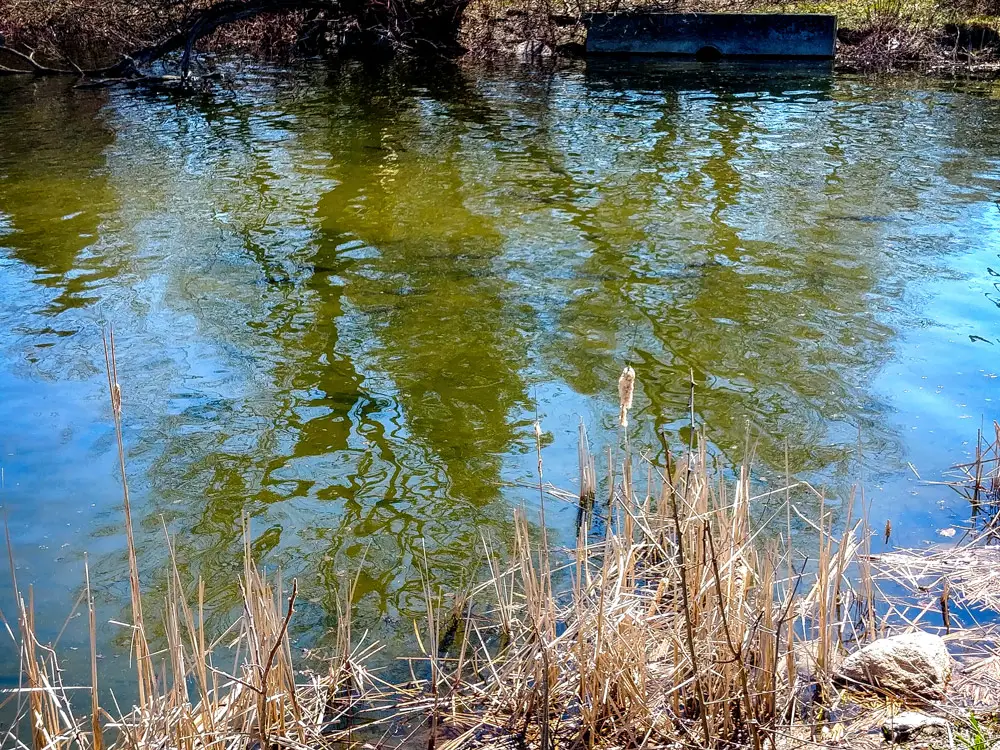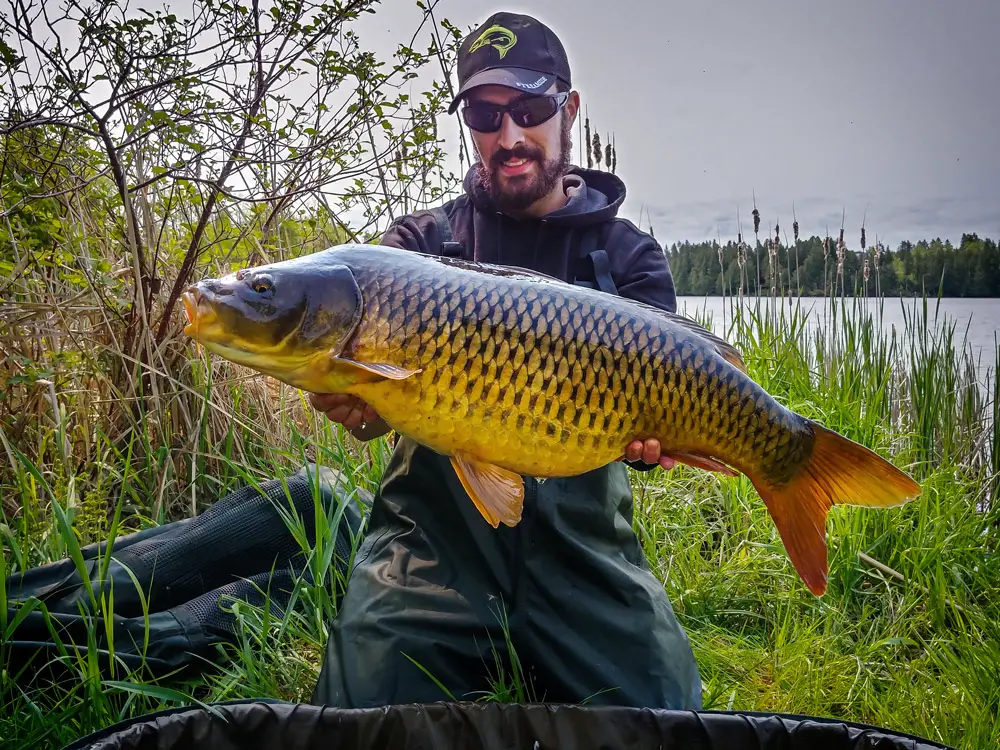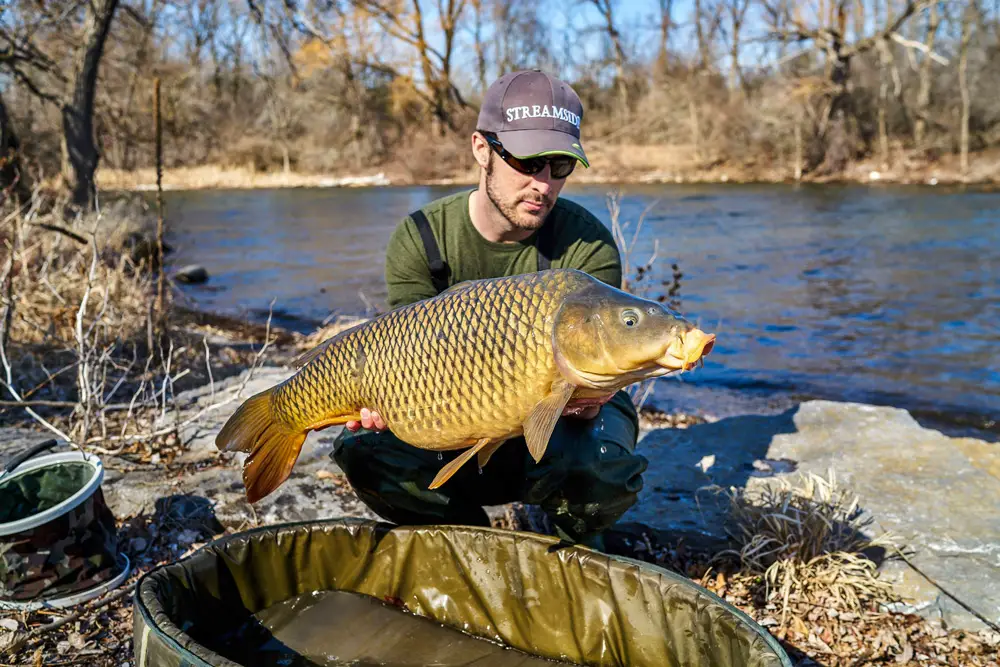Spring is a time of rebirth and awakening in more ways than one! After a long harsh Canadian winter, the water slowly returns to a fluid, and as the air temperature rises, so too does the temperature of the water.
Eventually, a pivotal moment comes as the water reaches its maximum density at four degrees Celsius, it’s as though a switch flips; nymphs hatch, bloodworms emerge, and an entire body of water seemingly jump-starts to life.
Spring is my favourite season to pursue carp because I have been going stir-crazy all winter, rocking in a corner fumbling with my gear like a hermit (it’s quite a sad state, to be honest). Although at times it is testing—wet, cold and temperamental—nothing gets the blood flowing more than that first indication, that first bite, and that first successfully landed fish.
Over the years, I have discovered some truly amazing early-season hotspots and have landed some incredible fish. I find that spring and leading up to spawn in early summer is the best time to catch the biggest specimens in a chosen water for this is when carp are the most concentrated.
During early-mid spring, it is not uncommon to see carp in large numbers shoaled up together and seemingly inactive. At this point in the year, most sport fishermen are out on the creeks in search of migratory trout or anxiously awaiting Walleye opener.
This early-early season is an optimal time to locate where the carp are gathering from ice-out until spawning season. If you are stealthy and lucky enough to find a seemingly dormant pod of carp basking in the afternoon sun—well… you are already halfway there!
Needless to say, much like ourselves, if carp don’t need to move a great distance in the cold, they won’t! So, if you find a large pod of carp moving about very slowly (or not at all), a natural feeding area is nearby.

So, what if you aren’t one of the lucky ones? What if you can’t find one of these pods? Is all hope lost? Not at all!
Your water may just be too busy and thus fish aren’t collecting anywhere near shore, rather they could be hanging out near a shoal (a shallow feature called “structure” in fishing terminology, surrounded by deeper water) some distance from the shore where they perceive it to be safer.
This might mean that some additional work is in order, namely pre-baiting, which is a good idea whether fish are present at your chosen spot or not, but we will get into that momentarily. So, let’s just say:
1) you’ve never seen a pod of carp early-season on your selected water,
2) you are new to carping and have not a clue, and/or
3) you are looking for new spots on new water. Where do you begin?
LOCATION, LOCATION, LOCATION!
On a lake (or any static body of water for that matter) the shallow bays usually in the northern reaches will warm up first. This is an ideal location to start your search for a prime early-season carp-fishing location. Carp will likely seek out siltier areas and/or wilted weed mats that slumped over and died during the winter months.
These provide shelter and nutrition for nymphs, crustaceans, and other decomposers that carp will seek out when that nagging need for a meal arises. I find that a shallow creek mouth or run-off is a brilliant place to start the year: a bit of moving, oxygenated water, and natural food in abundance. These areas can also draw in some big fish.
However, let’s say you don’t have a lake within a reasonable distance, but you have a perfectly “carpy” creek or river nearby. Well, if you are fishing creeks or rivers for carp, you may find that they will really begin to start feeding actively at the end of April or the beginning of May (depending on flow.) This is a great time to pursue carp on the fly!
Look for slower-moving sections such as shallow bays or back-eddies, for this is where natural sources of food collect, which provide ample sustenance for numerous species of fish, including carp.
Creeks and rivers have a near-constant flow; thus, carp will not necessarily stay in one place in search of food. Rather, they will scout the flowing waters. For this reason, much like anywhere else, pre-baiting is an incredibly successful method for increasing fish confidence and activity in your chosen area.
Regardless of where you fish, and regardless of what species, it is important to be mindful of your chosen spot. Be aware of snags and the terrain on which you intend to land these fish as carp are notorious for running for cover.
Also, contrary to their seemingly hardy nature, carp can be fatally injured if not landed in the water, on soft ground such as grass or a landing mat (see my article on fish care for more details!)

GET YOUR BAIT ON
Regarding baiting, LESS IS MORE during those first early sessions: it is important not to dump copious amounts of bait into the water on the day you intend to fish.
Instead, bait the area you intend to fish over the course of several days, sometimes even weeks prior to fishing it. This will provide fish with ample time to hone in on your fishing spot, to gain confidence and recognize it as a feeding location.
Once you have accomplished this, you will note that the bait is gone upon arrival and that fish are nearby or even continuing to feed in the area.
This is when you want to begin fishing, and this will likely be after a few days of consistently warm, stable weather. (note: as you move into summer you can start baiting more heavily as in this episode)

NOW FOR THE FUN STUFF
Now that you have found a fishing spot and baited it up, at last, you are ready to fish (check out this article to find out what you need in terms of tackle for a successful day of carp fishing.)
I would recommend starting an early-spring carp session in the afternoon on a reasonably stable, sunny day. This is mainly because mornings can be fairly cold at this time of year and the warm sun beating down over the course of the day is a good omen that fish will feed in the late afternoon/evening as water temperatures hit their daily maximum.
Upon arrival to your spot, your first step is to introduce some bait. Base the amount you put into a swim on the number of fish you have seen feeding on your spot or the number you guess are showing up at a time. Use the rule of thumb that in the early season a handful of corn (a great all-around bait) will be more than enough to gain the attention of at least one carp.
After you have baited up, set up your tackle and prepare your rig. Before casting in, be mindful of whether there is any fish present, as a cast could spook them off and prolong the duration before that first bite.
Once you are certain of the fact that fish aren’t in the vicinity at that very moment, introduce your trap (rig), loosen off your drag/activate your baitrunner and wait. A bite indicator is a great way to register fish activity/presence and/or bites that you may not perceive normally. On several occasions, I have had twitchy bites in the early season that didn’t take drag, and had it not been for my alarms fish could very well have ejected the rig.
And I can’t stress this enough at this time of year: STAY CLOSE TO YOUR ROD! You never know what could be sniffing away at your presentation, about to take it at any moment.
IN CONCLUSION
HOWEVER, prepare to be humbled and accept that you could very well blank on your first few attempts or catch the first time and then have a streak of blanks, but that is ultimately part of the excitement.
Just know that you are building that spot up by baiting and giving the carp a reason to frequent your chosen swim.
Time spent on the bank is not time wasted. Learn the quirks and features of your spot and watch the water for all signs of life. In no time at all, you will figure out that new swim and be confident in fishing it.

Here’s hoping the winter will be short and forgiving! In the meantime, I will be studying those bathymetric charts, looking for that next hotspot.






